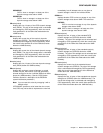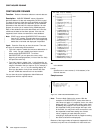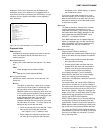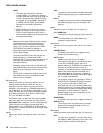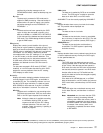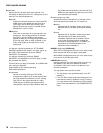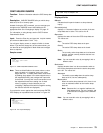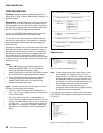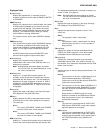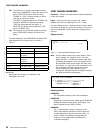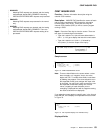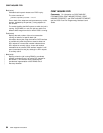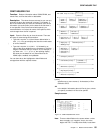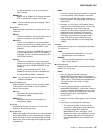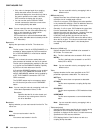CEMT INQUIRE ENQ
| Displayed fields
| Duration(
value
)
| displays the elapsed time (in seconds) since the
| enqueue f entered its current state of OWNER, WAITER
| or RETAINED.
| ENQFails(
value
)
| displays, for enqueues held in retained state, the number
| of failed enqueue attempts for this resource since the
| enqueue was last acquired. This indicates how many
| UOWs have received LOCKED responses due to this
| enqueue. The ENQFAILS option helps you identify
| which UOWs are causing “bottlenecks.”
| For enqueues held in action state, ENQFAILS displays
| zero.
| ENQScope(
value
)
| If the enqueue has sysplex scope, ENQSCOPE displays
| the 4-character name which was used to qualify the
| sysplex-wide ENQUEUE request issued by this CICS
| region. If it has region scope, ENQSCOPE displays
| blanks.
| All CICS systems with the same ENQSCOPE value
| share the same sysplex Enqueue name space.
| Netuowid(
value
)
| displays a 27-character string containing the
| network-wide LU6.2 name of the UOW that owns or is
| waiting for the enqueue.
| Note: Nondisplayable characters appear as periods.
| You can use PF2 on the expanded panel: to see
| the value in hexadecimal.
| QUalifier(
value
)
| displays a 1- through 255-character qualifier (for
| example, record id) that further identifies the resource
| associated with the enqueue lock. The data displayed
| depends on the type of enqueue, as shown in Table 2
| on page 82. If no QUALIFIER data applies (that is for
| EXECENQ, ADDREXECENQ, or TSQ), a value of zero
| is displayed.
| QLen(
value
)
| displays the length of the data, in the range 0 through
| 255, displayed in the QUALIFIER field.
| RELation
| displays whether the data is associated with the owner
| of the enqueue or with a task waiting for the enqueue.
| The values are:
| Owner
| The (
value
), NETUOWID, TASKID, and TRANSID
| are those of the owner of the enqueue.
| Waiter
| The (
value
), NETUOWID, TASKID, and TRANSID
| are those of a waiter for the enqueue.
| RESource(
value
)
| displays a 1- through 255-character string containing the
| name of the resource associated with the enqueue lock.
| The data displayed depends on the type of enqueue, as
| shown in Table 2 on page 82.
| Note: Nondisplayable characters appear as periods.
| You can use PF2 on the expanded panel: to see
| the value in hexadecimal.
| RLen(
value
)
| displays the length of the data, in the range 0 through
| 255, displayed in the RESOURCE field.
| State
| displays the state that the enqueue is held in. The
| values are:
| ACtive
| The enqueue is held in active state.
| RETained
| The enqueue is held in retained state. Its owning
| UOW has been shunted, or is in the process of
| being shunted.
| TAskid(
value
)
| displays the number of the task associated with the
| UOW. If the UOW is shunted, it is the task number
| associated with the UOW before it was shunted.
| TRansid(
value
)
| displays the 4-character identifier of the transaction
| associated with the UOW. If the UOW is shunted, it is
| the identifier of the transaction associated with the UOW
| before it was shunted.
| TYpe
| displays the type of resource being enqueued upon. The
| values are:
| Dataset
| The resource is a record in a VSAM data set (or a
| CICS-maintained data table). RESOURCE
| contains the name of the data set and QUALIFIER
| contains the record identifier.
| File The resource is a record in either a BDAM file or a
| user-maintained data table. RESOURCE contains
| the name of the file and QUALIFIER contains the
| record identifier.
| When the file is a BDAM file then the record
| identifier is prefixed by the BDAM block identifier.
| Note that truncation occurs if this combination
| exceeds 255 characters.
| EXecenq
| The resource is associated with an EXEC CICS
| ENQ request. RESOURCE contains the enqueue
| argument passed on the request.
| ADdrexecenq
| The resource is associated with an EXEC CICS
| ENQ request. RESOURCE contains the address
| enqueue argument passed on the request (that is,
| the LENGTH parameter was omitted on the
| request)
Chapter 11. Master terminal CEMT 81



